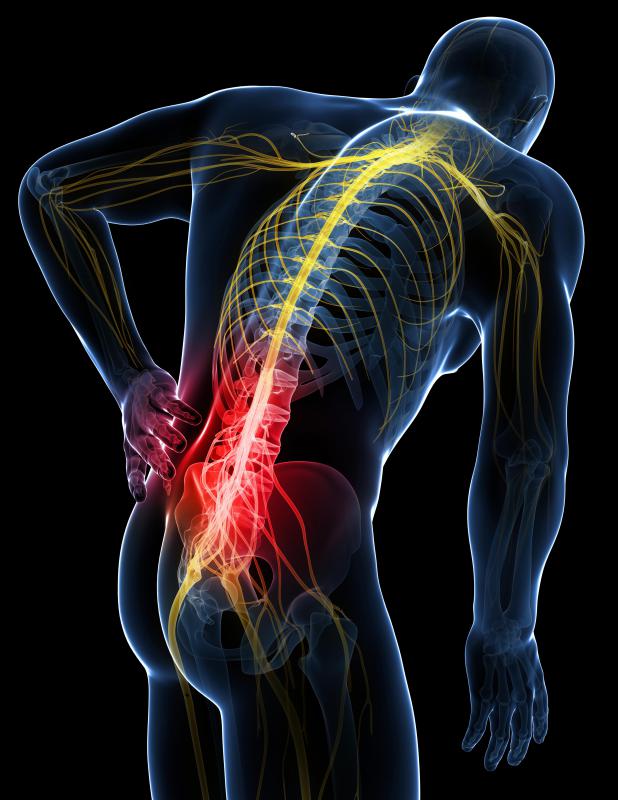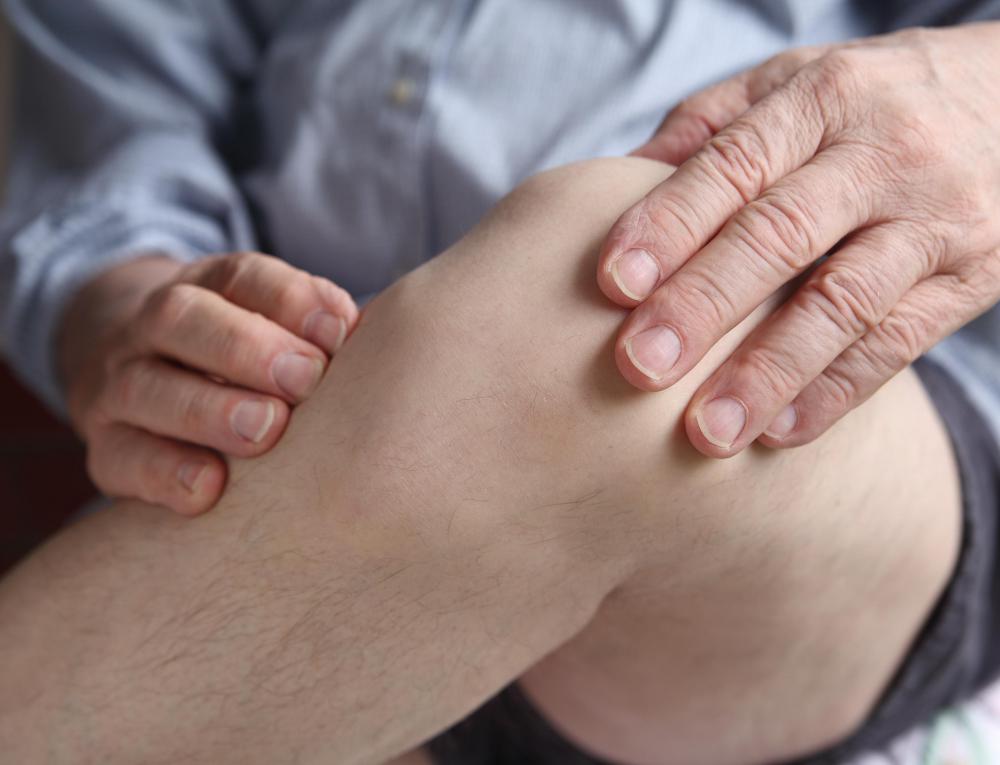At WiseGEEK, we're committed to delivering accurate, trustworthy information. Our expert-authored content is rigorously fact-checked and sourced from credible authorities. Discover how we uphold the highest standards in providing you with reliable knowledge.
What is the Sacroiliac Ligament?
The sacroiliac ligament is the connection between the sacrum and the hips. The sacrum is a large triangular bone at the base of the spine in the pelvic cavity at the ileum between the two hip bones. The ileum is the largest of the pelvic bones which gives the hips a rounded appearance.
This ligament, or fibrous tissue which links bones, cartilage or other structures together, provides stability between the sacrum and the hips. The sacroiliac joint, the point of attachment of the bones, is a strong connection with the ability to withstand the pressures of weight bearing. Problems with this ligament can cause pain issues to include things like low back pain and pain in the hips, thighs, buttocks or legs.

Irritation or problems of the sacroiliac ligament or joint can also cause the disruption of normal joint movement. Physical discrepancies or difficulties in this area can present as a decreased or increased motion. A reduction in range of motion is caused by the tightening or contraction of the ligament or area muscles. An increase in motion, on the other hand, is caused by a stretching or lengthening injury.

Common problems which can occur in the sacroiliac ligament or joint area include sprains, strains and arthritic changes. Sprains are injuries to the ligament or muscles, whereas strains are injuries to the muscles or tendons. These irritations can cause tiny muscle tears that cause tenderness, pain, inflammation and a decrease in range of motion. Arthritis is a condition of inflammation, or pain, swelling and heat, to the joints which may or may not cause structural changes to the joints.

However, pain in the sacroiliac ligament can be caused by a general inflammation of the joint, referred to as sacroiliitis, or by general dysfunction such as a subluxation or a partial or complete dislocation of the bones out of normal positioning. These types of disturbances are commonly referred to as sacroiliac joint dysfunction.
Symptoms of sacroiliac ligament problems involve the control of inflammation causing pain and swelling, and rest to promote healing. Incorporating stretching or stabilization exercises, depending on the injury can help prevent further injury and future incidences of pain. A gradual return to activities is also necessary. For chronic problems, steroid injections into the problem area may ease inflammation and the use of sacroiliac belts may aid in stabilizing the area with physical activity. In extreme cases where there is joint instability, the surgical placement of plates and screws or the removal of damaged areas may be beneficial.
AS FEATURED ON:
AS FEATURED ON:



















Discussion Comments
Many blessings and good business to you all for creating this wonderful website, showing X-rays that are clear and clean. Being able to identify my own specific point of pain calmed me.
I see large flat or curved surfaces which join each other with r.o.m indicated. All this pain from a couple of cracks and some stretched "rope." I can see that my repairs can be non-intrusive. Many thanks. --hawaiibobbo
Pain involving the sacroiliac ligament can come in many different forms. My mother used to have trouble with this ligament. She would get terrible pain in her lower back, her buttocks and her leg would hurt or some times even go numb.She would rest it and take aspirin and would get better, only to get worse at another time.
My cousin had a different problem. Her sacroiliac joint would go out of place. Instead of having surgery, her doctor told her to do 60 sit-ups everyday. This made her abdominal muscles strong enough to keep her sacroiliac joint in its proper place.
Post your comments